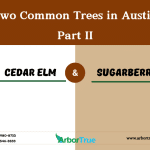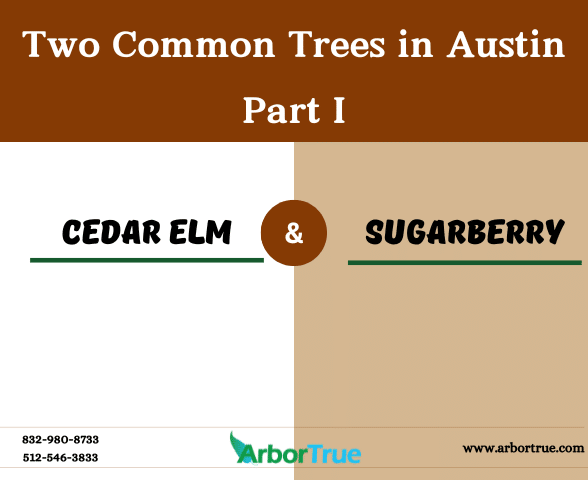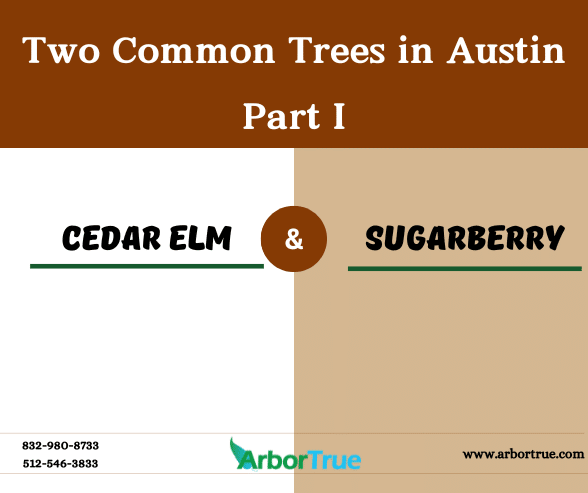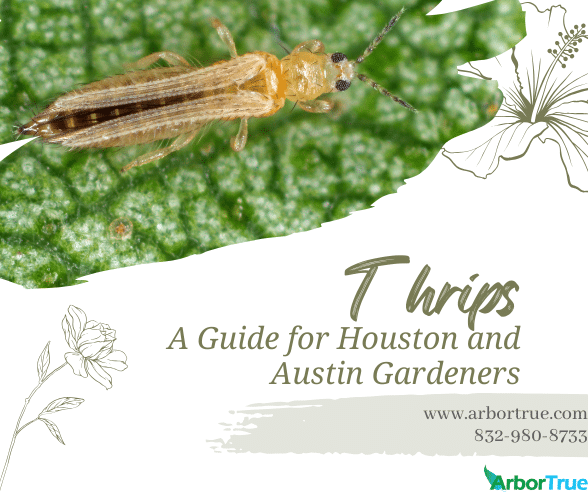
Mushroom Monday: Beech Mushroom (Hypsizygus tessulatus)
May 27, 2024
Two Common Trees in Austin: Cedar Elm and Sugarberry – Part II
May 31, 2024
Two Common Trees in Austin: Cedar Elm and Sugarberry – Part I
We recently came across two reports. One was from 2021 and it drew information from a 2014 report. Both reports were about trees in Austin, Texas. They talked about the number of trees, the benefits from them, the different species, and more in Austin. The 2014 report in particular has a great deal of information. Check out both reports. You can learn a lot of information.
One thing that was noted in the reports were common trees in Austin, Texas. There were different lists in the 2014 report based on the sizes of trees looked at. We thought we’d spend two posts looking at two trees that made the lists: cedar elm and sugarberry. In this post, we look at cedar elm. Later, in another post, we’ll look at sugarberry trees. In a previous post, we looked at Ashe Juniper, which was number one on both lists in the 2014 report.
Cedar Elm
We’ve looked at cedar elm trees a couple of times before. We mentioned them in our Mushroom Monday: Texas Star Mushroom (Chorioactis geaster) post. We noted in the post that the mushrooms could be found on the stumps of cedar elms. Additionally, we looked at the tree as part of our Tree Thursday series on social media. We had a post about them on April 11, 2024.
The scientific name of cedar elm is Ulmus crassifolia. In terms of common names, it might also be known as Texas Elm, among other names.
Cedar elm trees are native to Texas and are deciduous (although they can be evergreens in certain places and under certain conditions). The trees can grow large, reaching a height of seventy five feet, having a width of between forty and sixty feet, and having a diameter of twenty four to thirty six inches. They can also grow quickly.
The bark of the tree has a color that ranges from gray to brown and has ridges. The branches droop and the crown shape is somewhat circular, but stretched out.
The leaves of the tree are simple (rather than compound) and have a pointed-oval shape with finely serrated edges. Their topsides are rough and have a green color that’s dark and shiny. Their undersides have fine hairs. During fall, the color of the leaves can change to a golden or orange/reddish color.
The tree produces flowers that bloom toward the end of summer or in the fall. They form in clusters on short stalks. People can be allergic to pollen from them. The fruit has a wing shape and generally becomes ripe toward the start of fall, but it can vary. The seeds are generally spread by the wind. Unlike some other elms, cedar elms produce seeds in autumn, and this is one characteristic that distinguishes them.
Cedar elms can be found growing naturally as well as being found planted in landscapes. It can grow in partly shady conditions and can tolerate drought. Like other elms, it is susceptible to Dutch elm disease. Spanish moss can also be found growing in it. Question Mark and Mourning Cloak butterfly larvae (caterpillars) use the tree for food, eating the leaves. It has a distinction in that of all the elms in Texas, it occurs in the greatest numbers.
If you found learning about cedar elm trees interesting, be sure and check out our other TrueTreeTalk blog posts. Follow us on Facebook to keep up with these and other posts. Be sure and check out a later post where we look at sugarberry trees.
* * *
ArborTrue is a science-based tree-service company. We provide a range of services including tree trimming, tree pruning, tree removal, tree planting, arborist consultations, and more. Reach out to us online to schedule an appointment.




